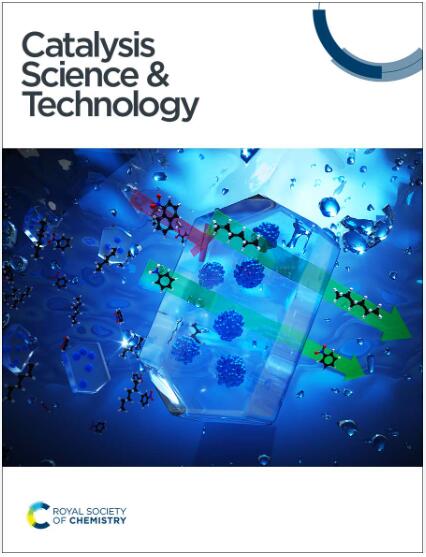The effects of SO2 impurities on CO2 electroreduction on bare silver and SiO2 coated silver in different cell geometries†
IF 4.4
3区 化学
Q2 CHEMISTRY, PHYSICAL
引用次数: 0
Abstract
Electrochemical CO2 reduction presents an opportunity to transform waste flue gas with water and renewable electricity into chemicals or fuels. However, the energy-intensive nature of purification of flue gas underscores the appeal of directly utilizing the flue gas streams containing impurities. In this study, we investigate the impact of SO2 impurities on CO2 electroreduction in two electrochemical cell geometries: an H-cell and a membrane electrode assembly (MEA) cell. We observe distinctly different behavior of the Ag on carbon black (Ag/CB) catalyst under SO2 impurities in the H-cell compared to the MEA cell, where SO2 impurities exhibit a more pronounced effect on Ag/CB catalysts in the H-cell than in the MEA cell. This difference is attributed to the higher solubility of SO2 in the electrolyte compared to CO2, resulting in an accumulation effect and causing differences in the SO2 concentration near the electrode between the H-cell and the MEA system. By depositing a very thin SiO2 coating on the outermost surface of the Ag/CB catalyst using atomic layer deposition (ALD), the impact of SO2 on the catalyst's selectivity is diminished. This is attributed to the permeability difference between CO2 and SO2 through the SiO2 coatings and results in a local SO2 concentration difference between samples with and without SiO2 coatings.

求助全文
约1分钟内获得全文
求助全文
来源期刊

Catalysis Science & Technology
CHEMISTRY, PHYSICAL-
CiteScore
8.70
自引率
6.00%
发文量
587
审稿时长
1.5 months
期刊介绍:
A multidisciplinary journal focusing on cutting edge research across all fundamental science and technological aspects of catalysis.
Editor-in-chief: Bert Weckhuysen
Impact factor: 5.0
Time to first decision (peer reviewed only): 31 days
 求助内容:
求助内容: 应助结果提醒方式:
应助结果提醒方式:


